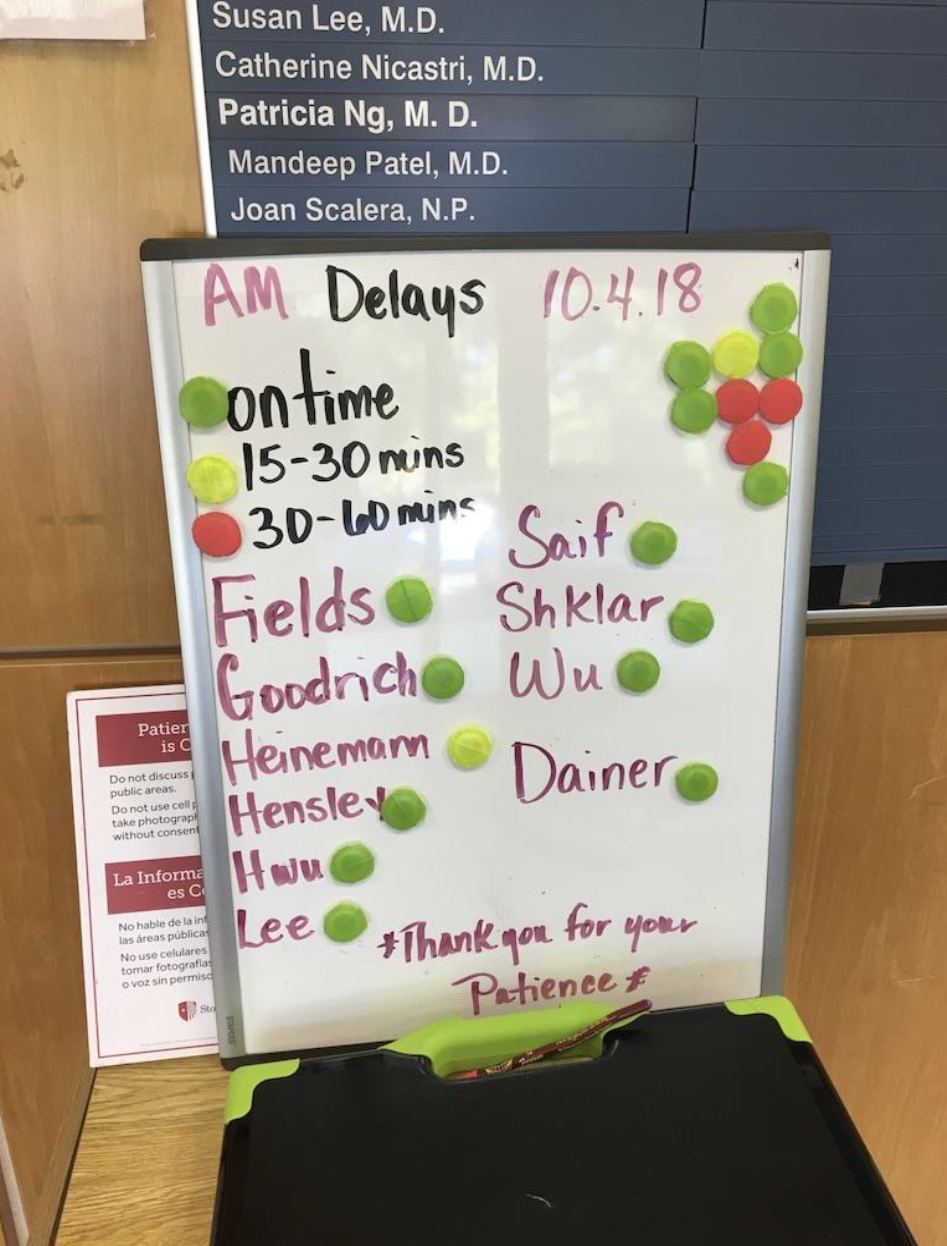Article
Waiting room concierge may improve customer service for primary care patients
Author(s):
No additional staff needed to let patients know if docs are running on time.
Stony Brook Primary Care, part of Stony Brook University’s Department of Medicine in East Setauket, New York, began using a notification board to inform patients about physician schedules. It was one of several relatively easy efforts that could help improve patient satisfaction scores, starting in the waiting room of primary care practices. This photo of the waiting room notification board appeared was first published by the Annals of Internal Medicine.

Moving a staff greeter into the waiting room could boost patient satisfaction for primary care practices.
It’s a method that has worked in Stony Brook Primary Care, part of Stony Brook University’s Department of Medicine in East Setauket, New York, said Susan Lee, MD. She is corresponding author of “Patients Deserve Great Service: The Waiting Room Concierge,” published in the Annals of Family Medicine.
Unlike many procedures in contemporary medicine, this intervention is relatively simple and required no additional employees.
“Since 2018, we have trained our front desk staff for the position of ‘waiting room concierge,’” Lee wrote. “This assigned person is physically in the waiting room with patients instead of behind the glass-enclosed front desk. With their own desk and computer in the waiting room, the concierge helps to check in patients, and is analogous to the greeter at Walmart who interacts with them, assisting with office navigation, form completion, and patient portal sign up, as well as providing assistance for those with mobility issues.”
The concierge also maintains a notification board with physician names and color-coded buttons in green, yellow, or red, to indicate if physicians are running on time, 15 or 30 minutes behind. The result: Patient satisfaction scores improved from 60% to almost 90%, Lee said, and physicians running behind were grateful when patients rescheduled their visits.
Stony Brook Primary Care continues to refine the role and intends to keep using it, Lee said.





